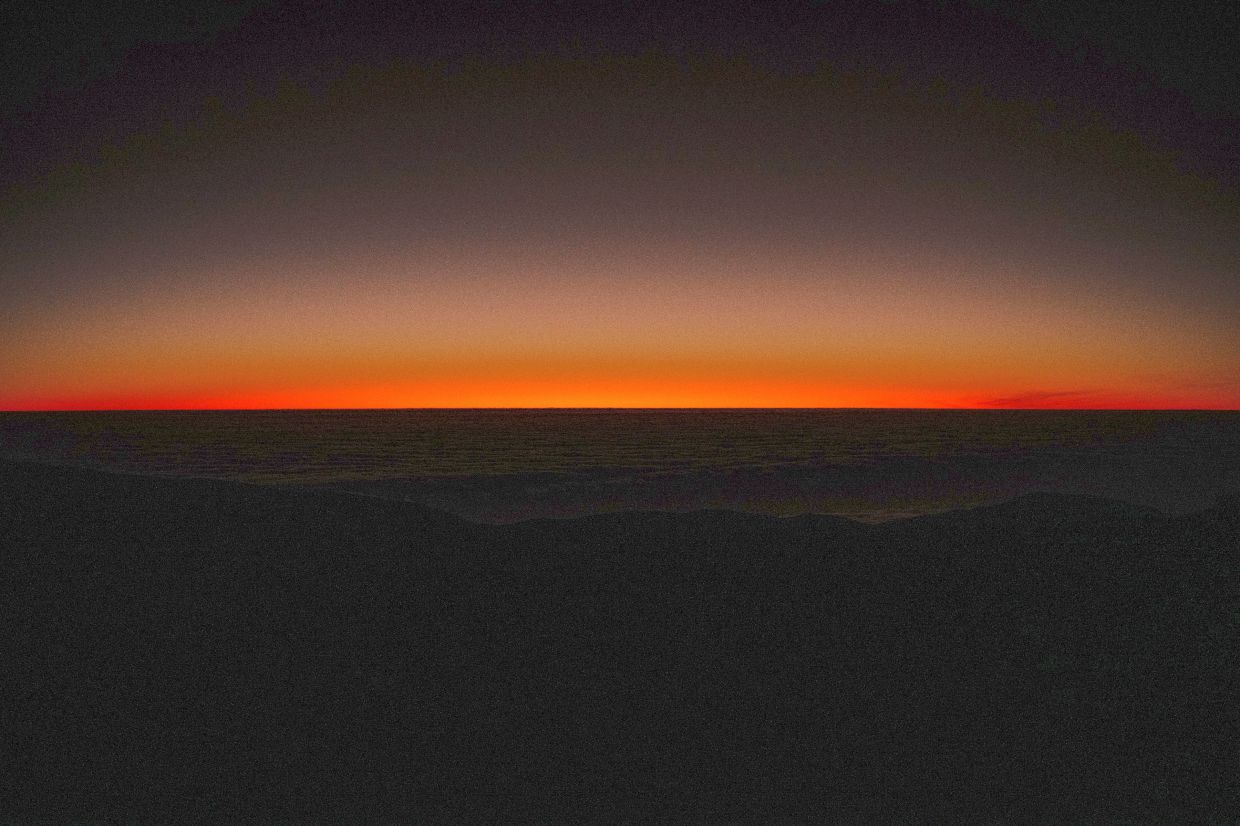
WHEN night falls in the Atacama Desert in northern Chile, brilliant constellations shine down on the dry plains.
So perfect was the inky blackness that the Indigenous people who live here believed they could make out the forms of animals in the dark spaces between the bright stars.
But increasingly, the skies have become blemished by cones of light projected skyward by nearby cities and blinking red dots from wind farms or industrial facilities.
“Darkness is extremely fragile,” Eduardo Unda-Sanzana, an astronomer and professor at a local university, said on a warm evening on a spit of land south of Antofagasta, a city of about 450,000 along northern Chile’s arid coastline.
The orange glow from the city caught a pair of porcelain earrings Unda-Sanzana wore and three silver hoops that jangled on the wrist of the professor, who was setting up a camera with a bulbous fish-eye lens to capture light on the horizon, hoping to create a light pollution map of the desert.
“Light and darkness have meant different things to me at different times in my life,” the professor said. “Darkness is what makes me see clearer. It is the medium through which I can observe the universe’s most delicate details. It’s like how you need silence to hear the quietest noises.”
Research has shown that the artificial brightening of the environment affects the human circadian rhythm, the regeneration of cells, the migration patterns of birds and even reproductive cycles.
So, Unda-Sanzana, 51, who directs the astronomy department at the University of Antofagasta, has been on a mission to defend the Atacama Desert’s darkness, setting up experiments to demonstrate the encroachment of light pollution and speaking to politicians, businesses and the public across the country.
The professor’s presentations on light pollution in Chile’s Senate and to United Nations working groups have led Chile to pass legislation regulating levels of artificial light emissions and requiring more government scrutiny of projects that could mar the country’s darkest skies.
In recognition of the astronomer’s work, an asteroid between Mars and Jupiter 180 million kilometres from Earth was even named Unda-Sanzana by the International Astronomical Union, an international group that advances the space study.
But plans to build a large-scale industrial facility and the light it would give off in a region filled with renowned observatories have left Unda-Sanzana and other scientists deeply concerned.
Unda-Sanzana’s small apartment in Antofagasta is full of trinkets and items gathered from a lifetime of trading and travel. Collections of CDs, books and figurines compete for shelf space with antique picture frames and Victorian memorabilia. The low whir of several hard drives fills an office that also includes multiple copies of The Hitchhiker’s Guide to the Galaxy and a Make Astronomy Great Again cap.
Standing by the living room window, the professor squinted irritably at a row of spotlights atop the city’s soccer stadium that fill the room with harsh white light.
Shadows cast by Cometa, the professor’s energetic kitten, flashed across the walls as she shot between the furniture.
The Antofagasta region has been attracting scientists to observe the night sky since the first observatory opened in the area more than 100 years ago.
A 2023 study by an Italian astronomer, Fabio Falchi, found that the three best sites on Earth for ground-based astronomy are all along a single tranche of the Atacama Desert, where the skies are kept dry, clear and dark by isolation and a unique confluence of geographic and climatic factors.
The Very Large Telescope, about 128km south of Antofagasta, has taken readings that helped scientists to win three Nobel Prizes since it went online in 1998.
And not far away, the Extremely Large Telescope, which is expected to become operational in 2029, will feature a vast mirror 38.9m in diameter and be the most powerful telescope ever built.
Scientists hope to use it to view the formation of the universe’s first galaxies and scour distant, earthlike exoplanets for signs of life.
But this once dark and desolate strip of land is growing ever more crowded.
Copper mines have long operated in the area, but now solar, wind and lithium facilities jostle for space, all of them piercing the night sky with artificial light.
Still, the greatest battle of Unda-Sanzana’s career could be yet to come.
Last December, private energy company, AES Andes, announced plans for a vast renewable energy facility to manufacture hydrogen-based fuels in the Atacama Desert, nestled among the world’s finest observatories. It includes a wind and solar farm, a desalination plant and a new port.
For astronomy, the consequences would be disastrous, according to scientists working in the area. The project would be just 4.82km from yet another high-powered telescope under construction.
“This would be utterly catastrophic for astronomy,” said Itziar de Gregorio, the leader of the European Southern Observatory in Chile, which operates the Very Large Telescope.
“All of the effort that international astronomy has put into the design, development and operation of these telescopes, which are the best on Earth, would basically be wasted.”
More than 3,000 scientists around the globe, including Unda-Sanzana, have signed a letter urging the Chilean government to move the project farther away from any observatories.
“These dark zones do not generate economic profitability, but they do generate vital knowledge – and these should not be in opposition with one another,” Unda-Sanzana said.
AES Andes said in a statement that “by implementing thoughtful lighting strategies and engaging with relevant stakeholders”, its new facility could serve as a model for coexistence in “the fight against climate change and the preservation of the Atacama’s unique night sky”.
Chile’s Environmental Ministry said it could not comment because the project’s evaluation was ongoing.
Unda-Sanzana is aware of the fragility of the progress made in raising awareness of the effects of light pollution and is alarmed that a giant renewable energy facility could undermine much of what the astronomer has fought for.
“If we lose these skies, we’re not just losing them for ourselves; all of humanity loses them,” the professor said. “There’s no replacement site. That’s why it should matter so much – not just to me, to Chile or the astronomical community, but to everyone.” — ©2025 The New York Times Company
This article originally appeared in The New York Times.




